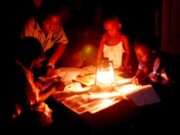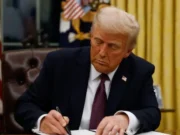By Dr Darlington K. Wiredu
In 2013, I was invited to the Indian High Commission in Ghana for an event where the then Minister of Education, Dr Jane Naana Opoku-Agyemang, was slated to speak.
Having newly graduated from my bachelor’s degree programme, I had founded an education nonprofit and was hoping to seize the moment to introduce my work to our nation’s education chief.
When we finally spoke, she listened patiently as I described my fledgling organisation and then remarked: “Young man, you have completed a bachelor’s in business administration and have started an education nonprofit?
Have you had any training in education?”
Vacancy: Upper Primary Teacher
When I admitted that I had not, she responded: “Well, that’s a problem.
Because how could you possibly hope to tackle the challenges young people faced in education when you have had no training in education yourself?”
That stark query sent me on a journey of deeper engagement with the very system I aspired to improve.
I accepted a national service posting to the Non-Formal Education Division in Cape Coast where I worked on adult literacy programmes and other educational initiatives for basic schools.
I then went on to pursue graduate studies in public policy and eventually completed a PhD in political and social science.
Now, 12 years since that first encounter with her, I feel compelled to add my voice to the ongoing debate over Ghana’s Free Senior High School (SHS) programme—hoping in the process to show just how much of an ‘educationist’ I have become since then.
Programme under pressure
Free SHS remains by far one of the most transformative initiatives we have seen in the country.
It has dramatically increased enrolment and empowered many families who otherwise may not have been able to send their children to senior high school.
Yet, the programme, in its current form, is beset with several challenges, some of which include overcrowded classrooms, overstretched school infrastructure and delayed government imbursements.
Like most stakeholders, I believe we must develop a more flexible approach to SHS funding—one that continues to promote access, while also recognising the diverse talents, socioeconomic realities and practical needs of learners.
Foremost, it may be worthwhile to consider placing junior high school graduates on one of two well-defined tracks: the existing academic SHS route and a fully supported Technical & Vocational Education and Training (TVET) option.
Although Ghana already has TVET institutions, they are often perceived as second-tier establishments reserved for those who do not excel academically.
This mindset is problematic, as it ignores the critical role that skilled workers play in sectors ranging from construction and agriculture to advanced manufacturing and technology.
Under this proposal, the state would set a performance threshold for the Basic Education Certificate Examination (BECE).
Students who meet or exceed this cutoff point automatically qualify for government-sponsored SHS, reflecting their readiness for a more theoretically oriented curriculum.
Those who score below the threshold would be guided toward TVET programmes, which the government would fully or near-fully sponsor.
High-performing students can also opt for the TVET track and receive comparable funding benefits, including full coverage of tuition, tools and materials.
This way, we dispel the notion that TVET is solely for lower-performing students and encourage academically inclined individuals to pursue a practical, skills-based education if they so wish.
For students who score below the cutoff yet remain determined to pursue an academic curriculum, self-funding remains an option.
This preserves freedom of choice and allows public subsidies to be reserved for those who demonstrate academic preparedness or a clear TVET inclination.
Merit, need: 2 dimensions of funding
A more nuanced approach to funding—as opposed to the current one-size-fits-all model—is critical and I propose structuring Free SHS on two key pillars: academic merit and financial need.
Merit begins with the BECE threshold. Students who meet the government’s established minimum aggregate score qualify for baseline coverage in either SHS or TVET.
Those who score, especially high—say, in the top deciles—receive a higher level of subsidy, possibly covering all tuition, textbooks and boarding expenses for SHS or specialised equipment for TVET.
This approach underlines the idea that demonstrated academic excellence correlates with a learner’s ability to benefit substantially from continued schooling or training.
It also affirms the notion that government funds are best deployed to nurture those who have already shown they are capable of sustained effort and strong performance.
At the same time, the need ensures that students who face financial hardships are not left behind. Families would file annual financial disclosures, allowing the government to classify them broadly into low-, middle- or high-income brackets.
Low-income households might receive near-total coverage, ensuring that genuine economic hardship does not block a motivated student from pursuing their studies or training.
Middle-income families could receive partial subsidies and high-income families—unless their children qualify for merit awards—would assume a larger portion of the expenses.
The pairing of merit and need means that a financially struggling family with a high-achieving child receives the strongest possible support, while wealthier families shoulder more responsibility, although their high-performing children are not shut out from government funding.
School-level targeting can further address congestion and quality issues. Rural community schools, for instance, could receive extra government grants for infrastructure upgrades, school materials or teacher incentives.
In addition, students who opt to enroll in these rural or peri-urban day schools might qualify for enhanced sponsorship packages beyond their baseline merit-and-need allocations.
Over time, this strategy could reduce overcrowding in urban boarding schools, distribute resources more equitably across regions and revitalise underserved localities by making education closer to home more appealing.
Annual scholarship re-evaluation
A key concern in many scholarship systems is their static nature—once a student is assigned funding, the amount rarely changes even if circumstances do. A better solution, in my view, is to adopt annual re-evaluations of both student performance and household finances.
Each year, SHS students would be assessed on grades, teacher evaluations and extracurricular engagement, while their TVET counterparts would be measured by practical skill assessments, apprenticeship milestones and supervisor reports.
If a learner excels beyond earlier expectations, it stands to reason that their subsidy should rise, enabling them to seize further opportunities.
Conversely, if performance slips significantly without a valid explanation, the government could reduce the subsidy to encourage renewed focus.
Alongside academic or technical reviews, households would also update their financial declarations.
A family that suffers a job loss or medical crisis might receive a greater share of public funding to avoid disruption in a promising student’s education.
Conversely, if a student’s family experiences a marked increase in income, it frees the government to channel resources to those facing more pressing needs.
This continuous recalibration ensures that the system remains both flexible and fair, allocating funds to where they can have the most impact.
Making use of what we already have
Successfully transitioning to a dynamic, needs-based Free SHS model requires leveraging existing systems, while addressing potential challenges.
Ghana’s Computerised School Selection and Placement System (CSSPS) provides a strong foundation for such an approach.
At the point of BECE completion, students would submit their track preferences—SHS or TVET—along with basic financial data.
The CSSPS would then calculate an initial sponsorship level based on academic scores and declared household income.
This ensures that both merit and need considerations are factored into funding allocations from the outset.
For students selecting the TVET path, the system could assign placements in accredited technical institutions or recognised apprenticeship programmes under the Commission for Technical and Vocational Education and Training (CTVET).
As each academic term or year progresses, schools and apprenticeship supervisors would upload updated performance metrics, while families submit refreshed financial information.
The system then automatically recalculates scholarships, raising or lowering the state’s share of funding based on the new data.
To maintain transparency and trust, a formal appeals process could be set up at the school level to address cases where families believe they have been misclassified financially or students feel their academic or TVET progression has not been accurately evaluated.
Furthermore, the Livelihood Empowerment Against Poverty (LEAP) programme provides a viable model for financial oversight as it already employs a regular means-testing system to determine household eligibility for social support.
By integrating LEAP’s methodology, the government can ensure that need-based subsidies reflect students’ actual financial circumstances over time, thus preventing funding inefficiencies.
Similarly, the Ghana Skills Development Fund (GSDF) offers a strategic avenue to strengthen TVET placements and industry linkages.
By allocating a portion of GSDF funds to students choosing TVET apprenticeships—particularly those placed in apprenticeship programs within GSDF-supported businesses—the government can align workforce development with education.
Costs for tools, materials and protective gear could be co-funded by the GSDF, thus reducing the financial burden on both students and the state while fostering stronger public-private partnerships in education.
Why this works
A dual-track system that offers SHS and TVET on equal footing, underpinned by annual merit-and-need evaluations, speaks directly to the difficulties inherent in an overcrowded universally funded model.
First, it acknowledges the variety of talents and career aspirations among Ghana’s youth.
While some are naturally drawn to theoretical studies and aim for university, others tend to excel at problem-solving through hands-on tasks.
A single route for all students can lead to disengagement for the practically minded, while also straining resources for the academically driven.
Second, the combination of merit and need promotes efficient resource utilisation.
Bright students from disadvantaged backgrounds gain full or near-full funding, while families that can comfortably afford certain costs are invited to do so.
This frees public funds to be targeted where they will have the strongest impact, whether that is helping an academically gifted child who cannot afford boarding or a resourceful TVET student who needs specialised equipment to refine their skills.
Meanwhile, school-level targeting brings equilibrium to the geographical distribution of students and the extra incentives for enrolling in rural community schools lessen the congestion in urban boarding facilities.
Third, annual re-evaluations keep both students and families engaged.
Learners understand that consistent effort is rewarded with sustained or increased funding, and families know that the system will adapt if their income changes—for better or worse.
This structure avoids the pitfalls of a one-time, all-or-nothing scholarship assignment, making it less likely that resources will end up locked away where they are no longer needed.
Finally, by making TVET truly attractive—even to top scorers—Ghana begins the long-overdue process of destigmatising TVET paths.
When academically inclined students willingly choose a technical or vocational career, society sees that hands-on skills can be just as rigorous and prestigious as purely academic endeavours.
The result can be a better balance between theory and practice in our national workforce, fuelling growth in industries that urgently need skilled labor.
Path forward: To do or not to do?
My earlier conversation with our distinguished Vice-President served as a profound reminder that good intentions in education must be paired with genuine expertise and a willingness to adapt. Free SHS has undoubtedly expanded horizons for countless young Ghanaians, but as enrolment soars, the urgent task is to ensure that its core objectives—equity and quality—are preserved.
Reflecting carefully on these issues, I am convinced that the proposed dual-track system—grounded firmly in merit, need and continuous recalibration—is precisely the adaptive model Ghana needs.
And if we genuinely desire to empower the next generation, then embracing a model that aligns the diversity of their talents and aspirations with a wider range of educational funding pathways should not be considered a great thing to do?
……
The writer is a Research Fellow, Innolead International.










































